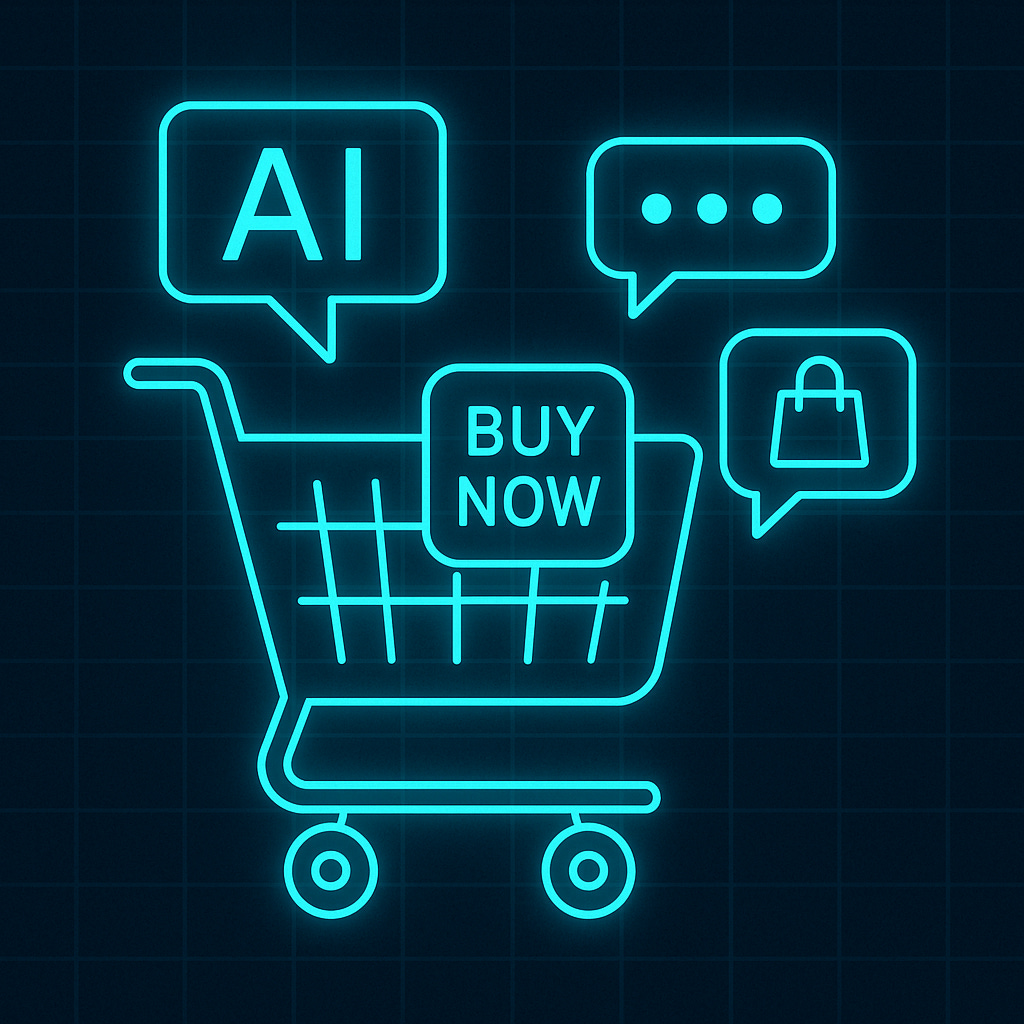From ChatGPT to Commerce
What Happens When AI Becomes the Storefront?
A quiet but potentially seismic shift is underway: OpenAI is testing a native checkout experience inside ChatGPT.
That might sound small. Another experiment. Another product update.
But this change has huge implications for product managers, growth leaders, and anyone thinking about the future of user experience and distribution. It signals something we’ve talked about in theory for years: AI as the interface layer—not just for information, but for transaction.
If you’re building anything that touches e-commerce, brand visibility, or discovery, it’s time to pay attention.
AI as the New Front Door
Traditionally, commerce flows through platforms—search, marketplaces, apps. Each of these carries friction, yes, but also opportunity: SEO, app store rankings, paid acquisition channels. You optimize for them. You measure your funnel.
But what happens when those front doors collapse into a single entry point—a conversation?
Picture this: A user asks ChatGPT, “What’s the best carry-on luggage for a minimalist traveler?” The assistant responds with a list of vetted options. The user clicks one, reads a short product description, and taps “Buy now”—without ever leaving the chat.
No website. No marketplace. No cart abandonment.
That’s a radically different landscape.
What Product Teams Need to Think About
So what changes when LLMs become the storefront?
Here are five strategic shifts product and growth teams should be thinking about right now:
Discovery ≠ Ownership
In the old model, discovery usually meant a visit to your domain or app. That was your chance to shape the narrative—show your brand, tell your story, differentiate.
In a ChatGPT-powered commerce flow, your product is just one tile in a list. There’s no homepage, no About Us page, no deep brand arc unless the user asks for it.
You need to rethink how you surface what matters most in a single card or paragraph. Think: headline copy meets value prop clarity meets conversion trigger. A/B testing isn’t going away—but the context just got smaller.
Search Ranking Becomes Prompt Ranking
When users find products via LLMs, you’re no longer competing on keywords. You’re competing on training data, model tuning, and maybe (eventually) prompt optimization.
That’s a black box today—but not forever.
Companies will need to invest in understanding how their content and metadata influence LLM responses. That includes structured data, verified reviews, and participation in partner ecosystems. Being “model-visible” will be the new SEO.
Conversion Happens Faster—but Trust Needs to Scale
LLMs are persuasive. When they give a recommendation, it feels authoritative—even if you didn’t ask for it.
That creates a high-conversion surface, but also one that can collapse without trust. If people feel misled, the blowback will be swift.
Brands and platforms need to make transparency a feature—not an afterthought. Where’s this recommendation coming from? Is it paid? Curated? User-reviewed?
PMs will need to build mechanisms that blend speed with safety, helping users feel confident without slowing them down.
Your Moat May Shift to First-Party Relationships
If AI assistants control discovery, your best defense isn’t just ranking well—it’s owning the customer relationship after the first transaction.
Think: post-purchase experiences, personalized onboarding, retention loops that go beyond the sale. In a world where the top of funnel is mediated by a model, mid- and bottom-of-funnel become your lever.
Owning the relationship—email, app install, community—will matter more than ever.
Product Pages as APIs
This might sound wild, but in the LLM commerce world, your product page is no longer for humans. It’s for machines.
You’ll still have human-facing assets, sure—but increasingly, what matters is how your data is structured, how your catalog is indexed, and how your offer shows up in the model’s “thinking.” Think less web design, more schema markup, more product feeds.
The product manager of the future might spend more time tuning a product catalog API than writing UX copy.
Final Thought: Don’t Just Watch—Prototype
This shift won’t happen all at once. But it’s coming fast.
Now is the time to prototype what embedded commerce in AI looks like for your product. Build scrappy GPTs. Run shadow funnels. Think about how your offer lives in a text-only world.
Because in this next chapter, the most valuable real estate may not be your homepage.
It might just be a sentence inside someone else’s conversation.

